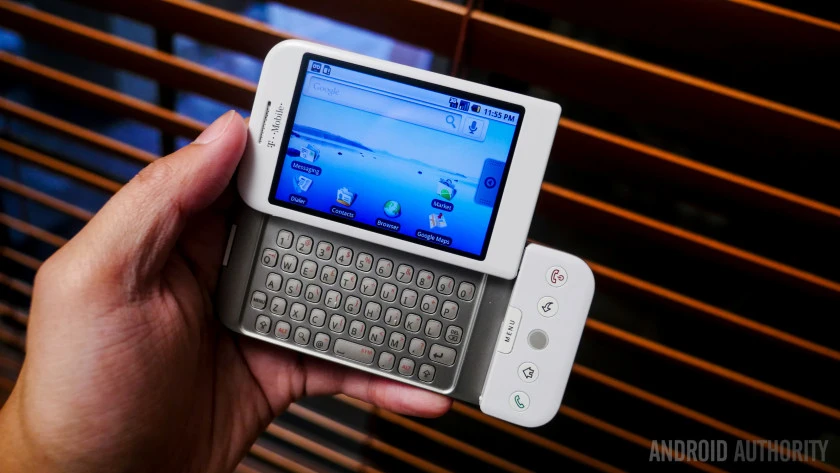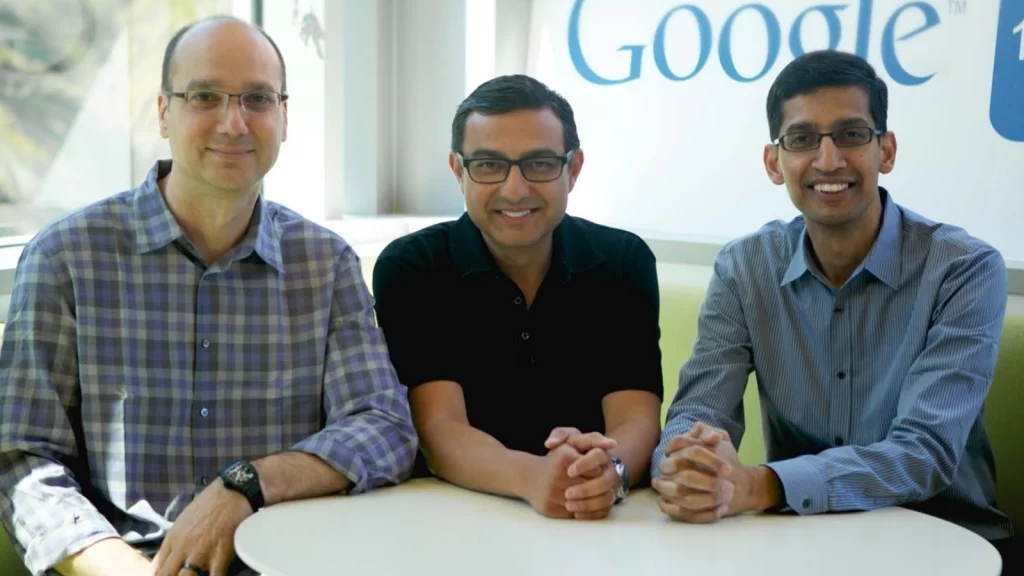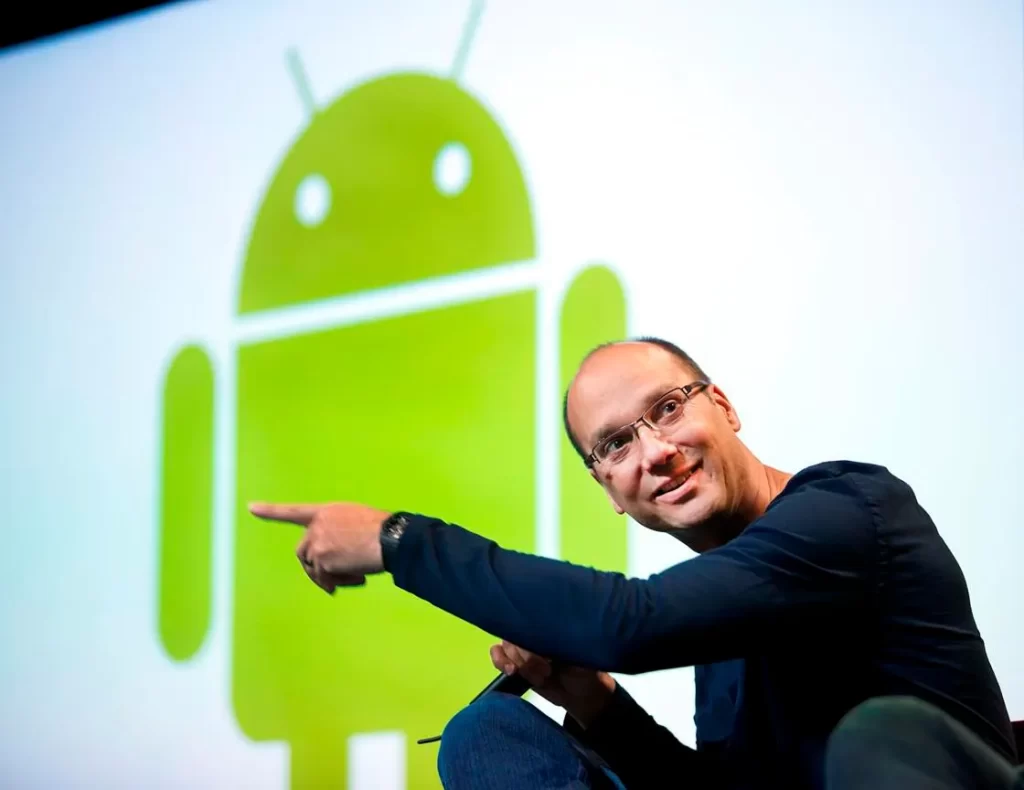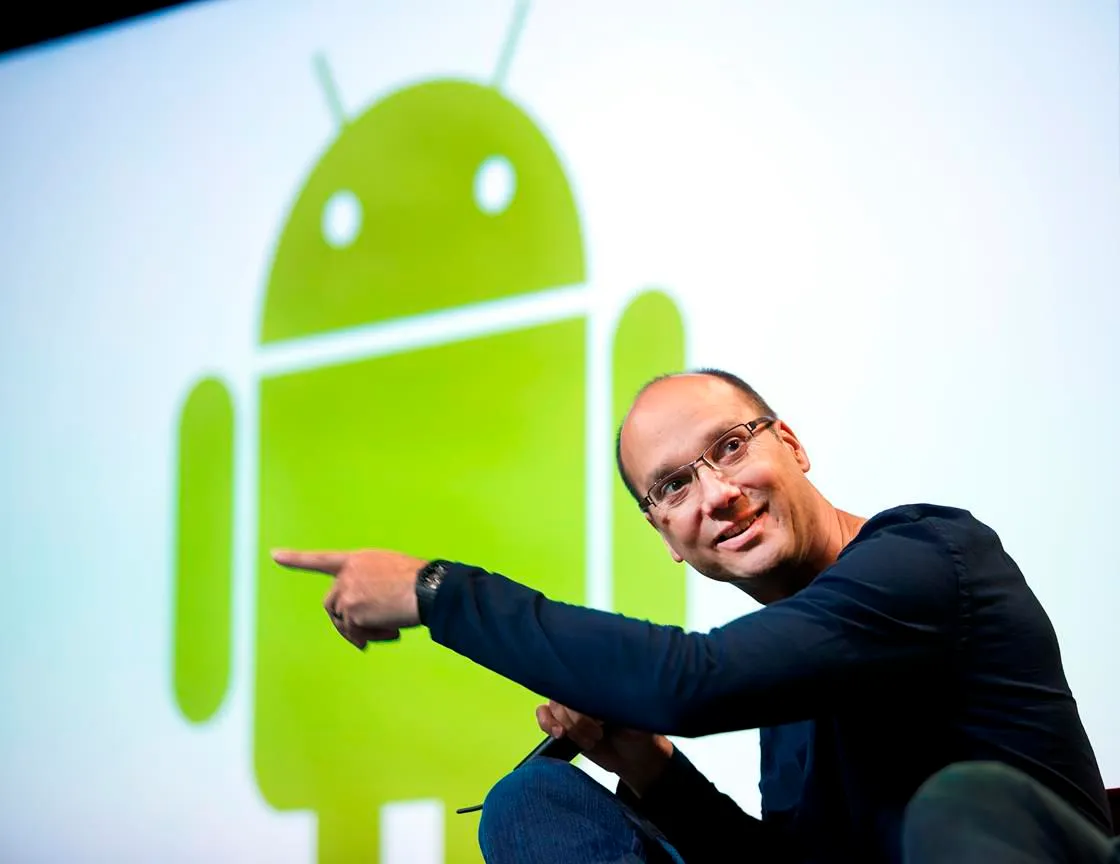Introduction:
On this day in 2008, the inaugural Android phone marked a significant milestone, commencing the vibrant history of Android. Join us in wishing Android a happy 15th birthday, celebrating a journey that reshaped the way we interact with mobile technology.
It often seems like we’ve been utilizing Google’s mobile operating system on our Android devices forever, but in reality, it’s been nearly 15 years since the inaugural Android phone made its debut in stores. A pivotal decision in Android’s history was Google’s firm commitment to establishing it as an open-source operating system.
This strategic move paved the way for widespread adoption by various third-party phone manufacturers. In just a few years following the launch of Android 1.0, smartphones powered by this innovative OS became ubiquitous.

First Mobile phone with Android OS
Follow us on Linkedin for everything around Semiconductors & AI
History of Android
The history of android goes back to Android Incorporation was initially established by Andy Rubin in Palo Alto, California, United States, during October 2003. Andy Rubin earned the affectionate nickname “Android” from his colleagues due to his passion for robotics.
The word “android” is also used to describe a humanoid robot or a robot with a human-like appearance or features.
Key figures at Android Incorporation included Andy Rubin, Rich Miner, Chris White, and Nick Sears. Initially conceived for camera applications, Android shifted its focus to smartphones due to the limited market demand for camera-only products.
On August 17, 2005, Google acquired Android Inc., making it a subsidiary. The Android OS development was announced by Google in 2007.
The inaugural Android mobile device was launched by HTC in 2008, marking a significant milestone in the Android journey.

Read Stories of Technical Stalwarts
History of Android Founder : Andy Rubin
The history of Android began in 2003 when Andy Rubin, Rich Miner, Nick Sears, and Chris White co-founded Android Inc. Google acquired Android Inc. in 2005 for $50 million. The public beta of Android Version 1.0 was released on November 5, 2007.
After Google’s acquisition of Android in 2005, Andy Rubin assumed the role of the company’s senior vice president of mobile and digital content. In this capacity, he took charge of steering the development of Android, an open-source operating system designed for smartphones. However, on March 13, 2013, Larry Page announced in a blog post that Rubin had transitioned from the Android division to undertake new projects at Google. Sundar Pichai was appointed to succeed Rubin as the head of Android.
Rubin managed Google’s robotics division post-shift. The division included notable firms like Boston Dynamics, owned by Google then. Rubin commenced this role in December 2013. However, he departed from Google on October 31, 2014, after dedicating nine years to the company. His departure marked the beginning of his venture into establishing a venture capital firm focusing on technology startups.
Your phone is a tool for communicating. You shouldn’t be communicating with the phone; you should be communicating with somebody on the other side of the phone. “Android Chief Says Your Phone Should Not Be Your Assistant
~Andy Rubin

Charges of Sexual harassment
In the midst of these career shifts, allegations of sexual harassment against Rubin surfaced. The New York Times reported that Rubin’s departure, which was initially presented as an amicable move aimed at allowing him to focus on philanthropic efforts and startups, was actually a result of a credible sexual harassment claim made by a Google employee against Rubin. The alleged incident took place in 2013, involving an extramarital relationship and accusations of coercion into non-consensual activity. Rubin vehemently denied these accusations, labeling them as false and part of a strategy to defame him during a challenging personal period.
The controversy surrounding these allegations extended into the workplace, culminating in the 2018 Google walkouts, during which employees protested against the reported $90 million “exit package” Rubin received to facilitate his departure from Google. In response, Google clarified its stance by stating that no employees dismissed due to sexual harassment concerns post-2016 had received payouts.

The logo of History of Android
Irina Blok, during her tenure at Google, crafted the now-iconic logo for the Android OS, presenting a fusion of a robot and a green bug in its design. The design directive from Google’s design team was straightforward: create a logo resembling a robot. Blok drew inspiration from various sources, including the familiar restroom symbols for “Men” and “Women,” ultimately shaping the Android mascot we recognize today.
Remarkably, Blok and Google made a unique decision to transform the Android robot into an open-source project. This was an uncommon choice, as most large companies typically safeguard logos and mascots from alterations. However, Google embraced a different approach, permitting numerous individuals to modify Android’s logo. This leniency is made possible by the Creative Commons 3.0 Attribution License.
In 2019, a significant revamp of the Android mascot, affectionately known as “Andy,” was undertaken, coinciding with a broader rebranding effort for Android. While Andy underwent a change, losing its body in the redesign, the new appearance seamlessly integrated across all facets of Android’s branding, achieving a more cohesive and widespread brand identity.

Android 1.0
The origins of Android can be traced back to the watershed year of 2007, a time when Apple revolutionized mobile computing with the introduction of the first iPhone. In the midst of this transformative period, Google was discreetly developing Android, slowly unveiling its intentions to compete with rival mobile platforms.
In a significant move, Google took the lead in establishing the Open Handset Alliance in November 2007, bringing together influential industry players. This alliance featured prominent phone manufacturers like HTC and Motorola, chip giants such as Qualcomm and Texas Instruments, and notable carriers like T-Mobile.
Eric Schmidt, who was then Google’s Chairman and CEO, emphasized the ambitious nature of this initiative, stating,
“Today’s announcement is more ambitious than any single ‘Google Phone’ that the press has been speculating about over the past few weeks. Our vision is that the powerful platform we’re unveiling will power thousands of different phone models.”
To mark a crucial milestone in this journey, the public beta release of Android version 1.0 was made available to developers on November 5, 2007. This marked the first step in what would become a monumental evolution in the realm of mobile operating systems.
Subsequent versions of History of Android
Major Android OS versions along with their release dates and key features:
| Android Version | Release Date | Key Features |
|---|---|---|
| Android 1.0 | September 2008 | Gmail integration, web browser, Google Maps |
| Android 1.5 (Cupcake) | April 2009 | On-screen keyboard, third-party widgets, video recording |
| Android 1.6 (Donut) | September 2009 | Improved search, voice and text entry search |
| Android 2.0/2.1 (Eclair) | October 2009 | Expanded account sync, Exchange email support |
| Android 2.2 (Froyo) | May 2010 | Improved performance, Adobe Flash support, hotspot |
| Android 2.3 (Gingerbread) | December 2010 | Enhanced UI, keyboard, text selection, internet calling |
| Android 3.0/3.1/3.2 (Honeycomb) | February 2011 | Tablet-focused, holographic UI, multitasking |
| Android 4.0 (Ice Cream Sandwich) | October 2011 | Unified UI, multitasking, facial recognition |
| Android 4.1/4.2/4.3 (Jelly Bean) | July 2012 | Smoother performance, Google Now, improved notifications |
| Android 4.4 (KitKat) | October 2013 | Enhanced performance on low-end devices, new dialer |
| Android 5.0/5.1 (Lollipop) | November 2014 | Material Design, improved notifications, better battery |
| Android 6.0 (Marshmallow) | October 2015 | App permissions, Google Now on Tap, battery improvements |
| Android 7.0/7.1 (Nougat) | August 2016 | Split-screen multitasking, enhanced notifications |
| Android 8.0/8.1 (Oreo) | August 2017 | Performance improvements, background limits for apps |
| Android 9 (Pie) | August 2018 | Adaptive Battery, Adaptive Brightness, gesture navigation |
| Android 10 | September 2019 | System-wide dark mode, enhanced privacy controls |
| Android 11 | September 2020 | Improved device and media controls, built-in screen recording |
| Android 12 | 2021 | Enhanced privacy features, redesigned UI, improved widgets |
Android 13 is the thirteenth major release and the 20th version of the Android mobile operating system. It was released to the public and the Android Open Source Project on August 15, 2022. The first devices to ship with Android 13 were the Google Pixel 7 and 7 Pro.
Android Vs iOS
Android and iOS are the two major mobile operating systems that power the majority of smartphones and tablets today. Here are some key differences between Android and iOS:
Source and Customization:
- Android: Open-source platform, allowing extensive customization by users and developers. Users can customize widgets, launchers, themes, and choose default apps for various actions.
- iOS: Closed-source platform, limiting customization options. Customization is more restricted, primarily limited to changing wallpapers, rearranging app icons, and using widgets in the Today View.
Device Ecosystem:
- Android: Diverse range of devices from various manufacturers, providing a wide choice of designs, features, and price points.
- iOS: Exclusive to Apple devices (iPhone, iPad, iPod Touch), resulting in a more controlled and consistent user experience across devices.
App Availability:
- Android: Google Play Store offers a vast selection of apps, including both mainstream and niche applications. The review process for app submission is less stringent.
- iOS: App Store provides a curated selection of apps, known for high-quality, well-optimized apps due to a strict review process.
Integration with Ecosystem:
- Android: Deep integration with Google services and products, such as Gmail, Google Drive, and Google Assistant.
- iOS: Seamless integration within the Apple ecosystem, including iCloud, Apple Music, FaceTime, iMessage, Siri, and more.
User Interface and Experience:
- Android: Highly customizable UI, with a variety of manufacturers offering unique skins and overlays (e.g., Samsung’s One UI, OnePlus’ OxygenOS).
- iOS: Consistent and intuitive UI design across all devices, maintaining a uniform experience regardless of the specific Apple device used.
Security:
- Android: Security measures include app sandboxing, encryption, regular security updates, and Google Play Protect to scan and verify apps for potential risks.
- iOS: Known for stringent security measures, including sandboxing, robust encryption, app review process, and frequent security updates. Apple maintains tight control over the app ecosystem.
Voice Assistants:
- Android: Google Assistant is the default voice assistant, providing robust natural language processing and integration with Google services.
- iOS: Siri is the default voice assistant, integrated with Apple services and products, but is considered to be less capable in natural language understanding compared to Google Assistant.
File Management:
- Android: Allows users to have access to the device’s file system, making it easier to manage files and transfer data between devices.
- iOS: Restricted file system access, limiting direct file management capabilities. Users typically manage files through specific apps.
Fragmentation:
- Android: Fragmentation due to the variety of hardware and software versions, which can lead to inconsistencies in performance and user experience across devices.
- iOS: Unified experience across a limited range of devices, reducing fragmentation and ensuring consistent performance and updates.
Cost and Affordability:
- Android: Offers a wide range of devices with varying price points, including budget-friendly options, making it more accessible to a broader audience.
- iOS: Generally more expensive, especially for the latest devices, with fewer budget-friendly options.
Both Android and iOS have their strengths and cater to different user preferences, making them popular choices in the mobile market.
Conclusion:
In summary, Android and iOS dominate the mobile landscape. Android, open-source, offers customization and versatility. Its vast device options, abundant apps, and Google integration define its tech prowess.








